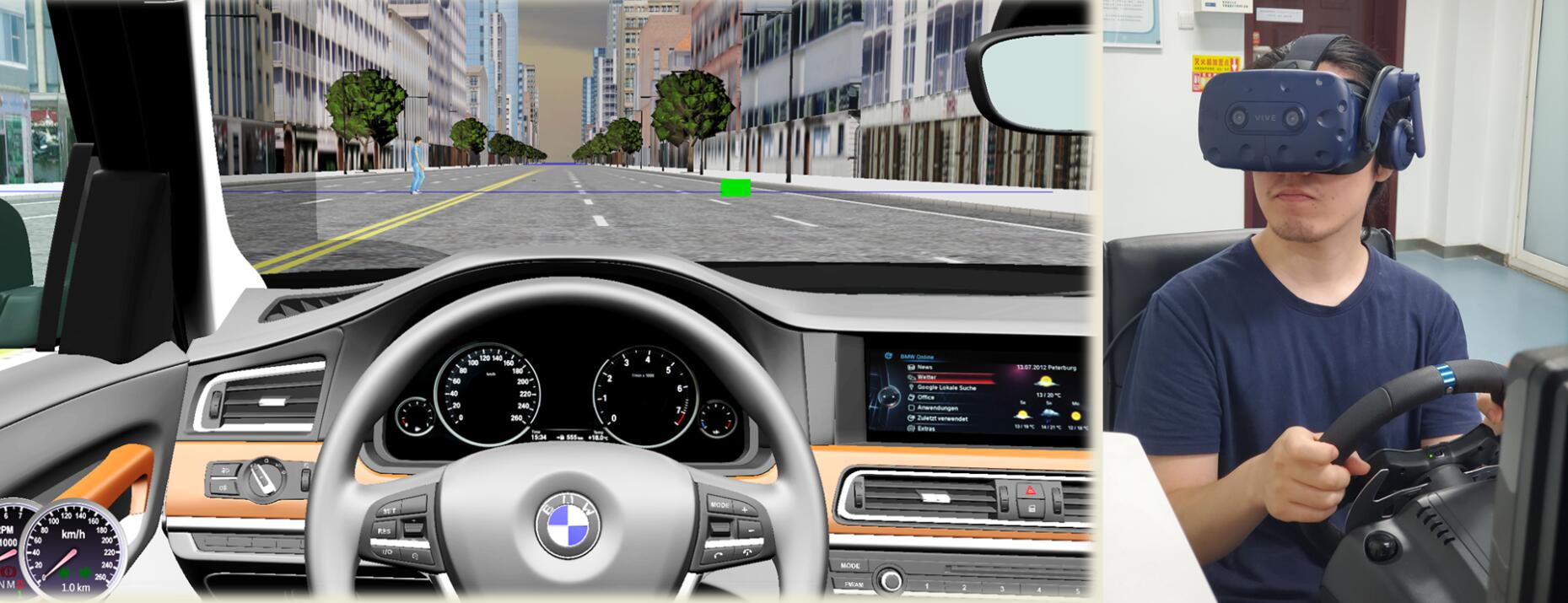行人的心思驾驶员来猜...
2019-07-09 18:03
陕西师范大学心理学院 陈文翔

(陈文翔正在执行其它实验中……)
要想安全地驾驶,能够眼观六路,耳听八方是前提,所以大量研究关注了驾驶员能否探测到环境中的风险。然而除了这些,在处处是行人的混合交通中,还要能猜透行人的心思:ta会在我车前过马路吗?这个问题之所以关键,是因为万一有个行人想过马路,而你猜错了,大胆前进,那。。。
猜心思的过程学术点叫“意图识别”。意图识别又可称为动作理解,即理解他人的行为意图.在驾驶员与行人交互这一情境下,即理解行人外显行为背后的过街意图。本研究期望通过深入理解交通情境中意图识别的过程与特征,识别出潜在的“意图识别失误”,为保障安全的交互过程提供指导。
本研究采集现实环境中的真实交互事件作为实验材料,通过视频剪辑的手段控制交互事件的时间进程来设计相应实验,要求不同经验水平的驾驶员对行人的过街意图进行识别。如果行人选择立即过街,而驾驶员做出了“行人不过街”的判断,即很可能导致碰撞事故。反之,若驾驶员能正确识别行人意图,则可以提前做出避让行为或提高警觉水平。同时,本研究辅助眼动追踪技术,记录了意图识别过程中驾驶员的眼动数据,对其意图识别机制进行探索。
研究结果发现,经验丰富的驾驶员采取了更为保守的策略,即倾向于认为“行人会过街”。这一现象很可能由于现实生活中,常常存在行人意图不明确、行为不规范、突然进入道路等不安全的现象。但凡出现一点点“行人可能立即过街”的线索,减速或保持警惕自然成为一种更加明智的选择,即不怕万一,就怕一万。而且,老司机们根据离行人的远近(实验中用到达时间)动态调整自己的判断标准,而新手们往往盯住一个标准不变。
同时眼动数据分析表明,驾驶员对潜在过街行人更早探测到,注视更久,且反应更快!这说明驾驶员的意图识别存在初步筛选的过程,他们首先对行人进行分类,选择性地忽视其他行人,监测可能过街的行人。对于不过街的行人,可能是由于找不到任何过街线索才做出的反应,故而更慢。进一步的分析发现,除了行人位置,离车的距离等线索,肢体动作是行人意图信息的重要线索,眼动数据分析表明行人头部受到驾驶员的更多关注(见下图)。我们推测,头部朝向暗示了行人的注意朝向,为驾驶员的意图识别提供了重要线索。

Fig. 6. The means of fixation duration on the different parts of a target pedestrian. Error bars represent the standard errors.
最后,蹭下热点,无人驾驶最近炒得火热,而实际上评估它的绩效的重要标准是它能否与行人安全的交互,比如它能否猜透行人的心思,目前的识别算法中,很多采用躯体弯曲度和腿部状态来看行人是否会过马路,然而,我们的研究表明,人类驾驶员“好像”不这么干。那么问题来了,二者谁更厉害?如果要在算法中刻画一个行人,是该重点描绘头部还是画个火柴人了事?这些问题我们将在我们下一个研究揭晓。
要知道论文详情,请搜:Drivers’ recognition of pedestrian road-crossing intentions: Performance and process (实际上现在搜了也没用,因为刚刚接受,还没有online),所以看下摘要吧
Drivers’ recognition of pedestrian road-crossing intentions: Performance and process
Drivers’ recognition of pedestrian road crossing intentions is an essential process during driver-pedestrian interaction. However, compared with the rich observational findings on interaction behavior, little is known on drivers’ performance in recognizing pedestrian intentions, as well as the underlying cognitive processes. To fill in the gap, this study evaluated drivers’ performance in making judgments of pedestrians’ road crossing intentions in recorded natural driving scenes. Experienced and novice drivers identified pedestrians as “will cross” or “will not cross” at some time-to-arrival while their eye movements were recorded. The results showed that experienced drivers were more conservative in discriminating whether a pedestrian would cross or not (preferred a “pedestrian will cross” judgment) and took a higher level of information processing of pedestrian intention. Regardless of driving experience, drivers had a higher detection rate, earlier detection, higher level of information processing and quicker response over pedestrians who intended to cross than those did not intend to cross. A quicker response was also achieved when the time-to-arrival was smaller. Analysis of eye movements showed attentional bias to the upper body of pedestrians when recognizing intention. These findings offer an initial understanding of the intention recognition process during driver-pedestrian interaction and inform directions for autonomous driving research when interacting with pedestrians.
参考文献:Chen, W., Zhuang, X., Cui, Z., & Ma, G. (in press). Drivers’ recognition of pedestrian road-crossing intentions: Performance and process. Transportation Research Part F: Traffic Psychology and Behaviour.
(作者:MGJ)
